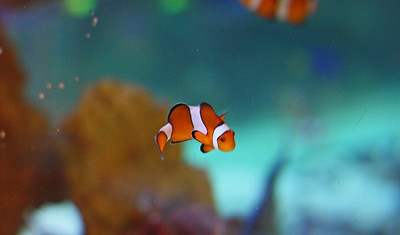Image Courtesy of Flickr.
Had Nemo’s siblings survived, maybe there would’ve been a fight for dominance over his anemone. Alas, we’ll never know.
Nemo and his family are anemonefish, also known as clownfish, characterized by their unique white bar patterning and territorial behavior over their host anemones. Notably, the thirty identified anemonefish species have a different number of bars on their bodies, ranging from zero to three. In a recent study published in the Journal of Experimental Biology, Japanese researchers from the Okinawa Institute of Science and Technology examined how anemonefish could use these bars to differentiate between species and identify potential intruders. Their question became, can anemonefish distinguish the number of bars on other individuals?
The researchers presented Amphiprion ocellaris—a species of anemonefish displaying three white bars—with four different fish models (zero, one, two, and three bars). A. ocellaris attacked the three-bar model with a much higher frequency than any of the other models, suggesting that anemonefish count white bars to fend off primarily same-species competitors for their host anemone. These fish weren’t messing around: the alpha fish—the largest fish in the colony—battled eighty percent of three-barred fish for up to three seconds, and even stared down one intruder for eleven seconds. Coming next from Pixar: Fighting Nemo—Nemo engages in a scientifically accurate ninety-minute standoff against another three-barred clownfish.

